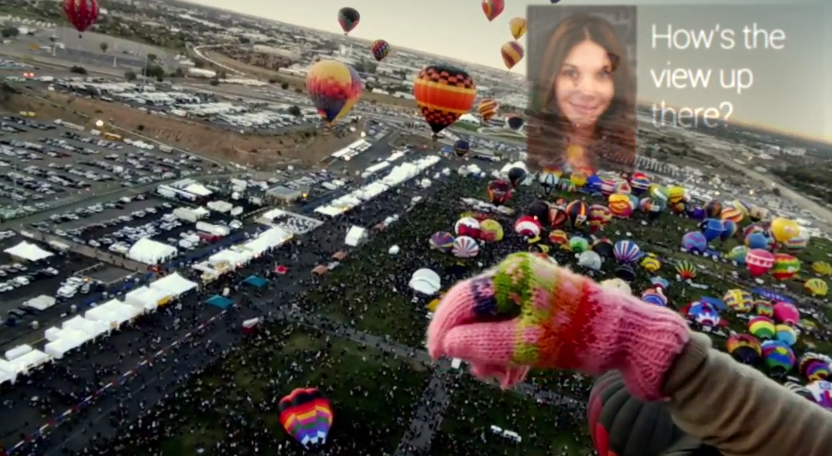Wednesday, February 27, 2013
Examining the Google Glass #ifihadglass Campaign
Google recently launched a brilliant user research campaign to coincide with their latest annoucements surrounding Google Glass. The campaign asked people to post what they would use Google Glass for if they had one, offering the incentive of the product for the producers of the best ideas. Participants are asked to tag posts on Twitter or Google+ with #ifihadglass.
Of course, the campaign's benefits are numerous, as it solicited ideas from potential customers, generated viral buzz for their product, and took a pulse of their customer perceptions. This final point is what I found to be most interesting. What I was curious about is how people perceive Google Glass, and smart glasses in general. Are they perceived primarily to be an assistance tool that will help you be smarter in your daily life or are they really a recording device for sharing or revisiting your experiences? Of course, smart glasses can and will do all of the above, but what jumps out off as the "I gotta have that!" feature for people?
I decided to leverage Google's #ifihadglass" campaign to attempt to answer this question (Full disclosure: I design user experiences for APX Labs, creators of a smart glasses software platform - check out our latest product video here). We certainly could have run this study on our own but there is no way to match Google's exposure at this moment, and frankly, this is a faster route to the same answers. After all, we are just talking about perceptions of the tool from people who have not only never used the product, but never used anything like it. Nonetheless, first impressions of what a product IS and what it's FOR can be an interesting data point.
My research plan wasn't particularly rigorous as I don't believe in being overly quantitative when evaluating highly speculative and qualitative feedback. I decided to find and capture 100 #ifihadglass tweets at random that were posted from Feb 22-25 and mark them across a handful of categories. I ignored posts that were clearly jokes or self-promotional. I put the selected posts into a spreadsheet and marked a "1" in each of the relevant categories. The categories were as follows: "Tool" (Input Device), "Capture" (Output/Documentation), and "Share" (Output/Broadcast). If the tweet was about someone wanting to use Glass to help them do their job, for instance, they would get a 1 in the Tool category. If they wanted to use it to document thier kid's life, they would get a mark in the Capture category. If they wanted share their travel experiences, they would get a 1 in the Share category. (Spoiler alert: This final example was by far the most common response.)
Before evaluating the tweets, I also checked the "How It Feels" product video for Glass to see how people may have been influenced in their thinking before submitting thier response. Turns out that Google was pretty balanced, demonstrating 8 scenes where Glass is shown as an Input device, 4 scenes where it is a Capturing device, and 7 scenes where it is a Sharing device. They also feature 7 scenes where there is no UI whatsoever (which was a clever decision by their video designers in my opinion)
So what are the results? Of the 100 #ifihadglass responses that I captured, there were 50 instances of it being percieved as a Sharing device, 39 as an Input device and 15 of it as a Capturing Device (remember that posts could register in multiple categories).
So Glass was primarily perceived as a Sharing device, a theme that appeared in exactly half of the responses. The "share my life/travels/city/job/experiences theme was without a doubt, the most common pattern seen. Again, this is just a perception of how someone would use these, but it's worth noting that the initial response was along the lines of "I want this product so I can share what I do". The self-promotion theme certainly aligns with prevalent trends of today's social tools, where Likes and Follows equate to people feeling self-worth and "mini-fame".
The "Input" responses were not too far behind at 39. Common themes here revolved around the ability to have information readily searchable (e.g. recipes, directions) or have information pro-actively presented in the field of view (e.g. people's names). Finally the "Capture" category got the least hits at only 15. This primarily revolved around people wanting to capture their life/travels/kids for their own purposes.
These results led me to measure an additional comparison, which was people's perception of whether or not this was a device for leisure and entertainment or something much more practical. Of course, people are going to gravitate towards the fun aspect of a product more than mundane one when describing what they would do with it, especially when the Glass promotional video was all about jumping out of planes and flying on trampezes. Nonetheless, it was worth taking this pulse as well. It turns out that 72% of the participants responded that they would use the device for enjoyment purposes while 27% wanted to use it for practical reasons.
The takeaway? Based on Google's communication of their Google Glass product, and based on the current context of the technology world, people are likely perceiving Google Glass as a device for sharing life's moments.... but the question remains, will anyone want to watch those moments? It will be very interesting to see how actual behavior patterns match up against this predicted behavior.
Is this what you expected? write me with your input! More to come..
Subscribe to:
Comments (Atom)



